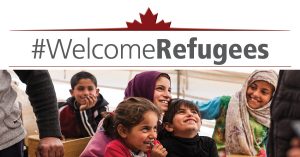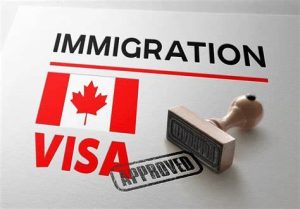15 Reading
A) Pre-reading Discussion Questions
You have listened to a talk about one speaker’s personal immigration story and developed your listening skills. Now you will read an article about immigration in Canada. Discuss the questions below with a partner.
- What are some reasons that people decide to move to a new country?
- What do you think of a system that awards points to people who want to immigrate for various qualities and skills, such as education and language ability?
- What are some challenges that people can face when they move to a new country?
B) Vocabulary Preview
| Work | Meaning | Your Own Sentence |
| reputation (N)
|
|
|
| ratio (N)
|
|
|
| counter (V)
|
|
|
| curtail (V)
|
|
|
| asylum (N)
|
|
|
| tract (N)
|
|
|
| regime (N)
|
|
|
explicitly (adv) |
|
|
| relatively (adv)
|
|
|
| codify (V)
|
|
|
| industrialized (adj)
|
|
|
| frontier (N)
|
|
|
C) Survey the text
You will notice various coloured highlights in the text below. Think about what structures they represent. Then answer the questions that follow.
Immigration in Canada
Canada has built a reputation over the last half century of welcoming immigrants and valuing multiculturalism. Foreign-born people make up about one-fifth of Canada’s population—one of the highest ratios for industrialized Western countries. Immigrants have helped the country counter aging demographics and fuel economic growth. In recent years, Canada has become an even more attractive destination for immigrants because the United States, under the leadership of President Donald J. Trump, has curtailed many of its immigration programs, including those for refugees, asylum seekers, and temporary workers.
As in the United States, immigration has significantly shaped Canadian society and culture. Following its independence from the United Kingdom in 1867, Canada used immigration to help develop vast tracts of land. Government-sponsored information campaigns and recruiters encouraged immigrants of that era to settle in rural, frontier areas.
But not all immigrants were welcome. Nineteenth- and early twentieth–century policies prevented or discouraged immigration by select groups, including certain people of non-European and non-Christian backgrounds, as well as the poor, ill, and disabled. Canada’s immigration calculus changed during the postwar period as refugees and others fled Europe, public attitudes toward outsiders softened, and economic growth demanded a larger workforce. Cold War tensions also influenced Canadian policy, with preferences established for anti-Communist and Soviet-bloc immigrants.
Legislation in the 1960s and 1970s laid the groundwork for the immigration regime Canada has today, which embraces multiculturalism. In 1967, Ottawa introduced a points-based system for evaluating applicants, after which Canada saw a jump in immigration from Africa, Asia, the Caribbean, and Latin America. A 1971 policy first articulated the government’s support for cultural diversity, and legislation in 1976 explicitly codified Canada’s commitment to refugees, mandated federal and provincial officials develop immigration targets together, and cast immigration as a tool for meeting the country’s cultural, economic, and social objectives.
Immigration has long played a vital role in Canada’s economy, providing a relatively young stream of workers. Immigrants have become increasingly important as the native-born labour force ages and the fertility rate remains low, at roughly 1.5 births per woman. However, Canada continues to suffer a shortage of skilled workers despite attempts to attract this category of immigrants. Today, immigrants account for nearly one-quarter of Canadian workers.
Source: What is Canada’s immigration policy?
D) Discussion Questions
Discuss the following questions with a partner. Then join your instructor and classmates for a class discussion.
- Why do you think Canada has a lower birthrate than some other countries? Similarly, why do you think Canada has a higher percentage of elderly? What effect do you think this might have on the economy?
- Do you think people from some countries would have an easier time adjusting to life in Canada than others? Which factors might make the adjustment easier?
- What factors would make Canada an attractive choice as an immigration destination, especially as opposed to other Western countries, such as the United States?
- What challenges do you think “generation 1.5” people (those who immigrated to Canada as children) might experience?
E) Paraphrasing Practice
Paraphrase each of the following sections of the text, as you would if you wanted to use the information in a summary.










